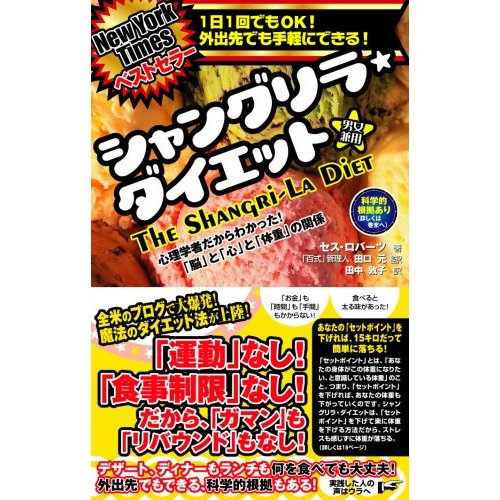The theory behind the Shangri-La Diet says that the more variable the flavors of your food, the less fattening it will be. The problem with junk food is not just the quickly-digested calories (from bread and sugar), it is also the remarkably constant flavor. Coke tastes exactly the same each time.
A new study has just come out that supports these ideas. Sprinkling essentially random flavors on food (which an SLD forum member called crazy spicing) caused a lot of weight loss:
Alan Hirsch, MD, founder and neurologic director of the Smell & Taste Treatment and Research Foundation in Chicago, studied “tastants,” substances that can stimulate the sense of taste. He asked 2,436 overweight or obese individuals to sprinkle a variety of savory or sweet crystals on their food before eating their meals during the 6-month study period. Subjects put liberal applications of the salt-free savory flavors on salty foods and applied the sugar-free sweet crystals on sweet or neutral-tasting foods. They did not know what the flavors were other than salty or sweet. The hidden flavors of the savory tastants were cheddar cheese, onion, horseradish, ranch dressing, taco, or parmesan. Sweet flavors were cocoa, spearmint, banana, strawberry, raspberry, and malt.
A control group of 100 volunteers did not use tastants. Both groups were allowed to diet and exercise if they were already doing so. For both subjects and controls, Hirsch measured weight and body mass index (BMI)—a measure of height and weight—before and after the study.
At the start of the study, the treatment group had an average weight of 208 pounds and average BMI of 34, which is considered obese. After 6 months of using the crystals, the 1,436 subjects who completed the study lost an average of 30.5 pounds, compared with just 2 pounds for the untreated controls. Their BMI dropped by an average of 5, moving them from obesity to the overweight range. Controls had an average BMI decrease of 0.3.
Hirsch theorized that subjects lost more weight than controls did because the tastants made them feel full faster and therefore eat less. However, he did not track the amount of food the subjects ate. Another possibility, he said, is that the crystals improved the taste of bland but healthy foods, such as tofu and some vegetables, causing a change toward healthier eating habits. He said he believes this approach works because, unlike most diets, it is not based on food restriction.
Subjects lost an average of nearly 15 percent of their body weight, results showed. It is not clear whether the apparent weight loss benefits of the tastants would extend past 6 months or to people who weigh less than the obese subjects in this study.
“It could be that the percent of weight reduction would be lower in people who are less obese,” Hirsch said. “In theory, tastants won’t work for people who eat even when they’re full and for people who have lost their sense of smell.”
Hirsch said the tastants worked so well that they contributed to the dropout rate. Some of the subjects stopped the study before 6 months because they already had reached their ideal body weight—an unexpected result, he said.
Hirsch has done similar experiments, with similar results, in the past.
Thanks to Sheila Buff.
